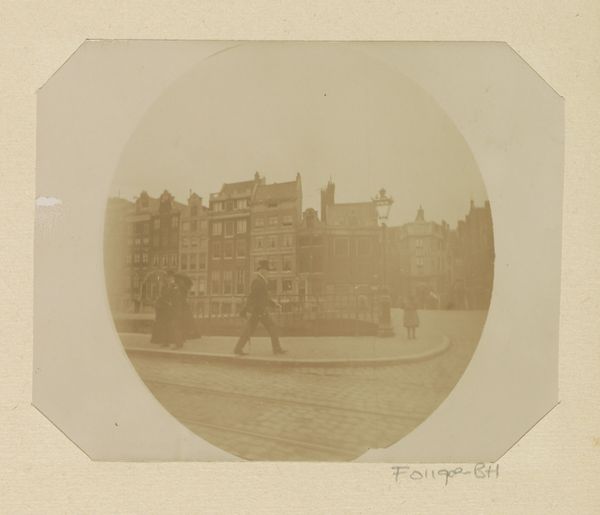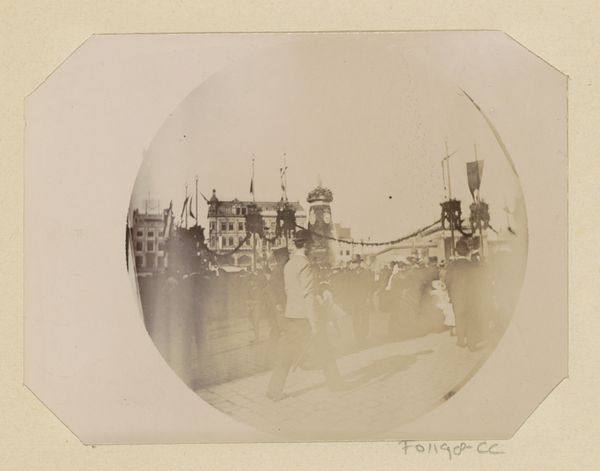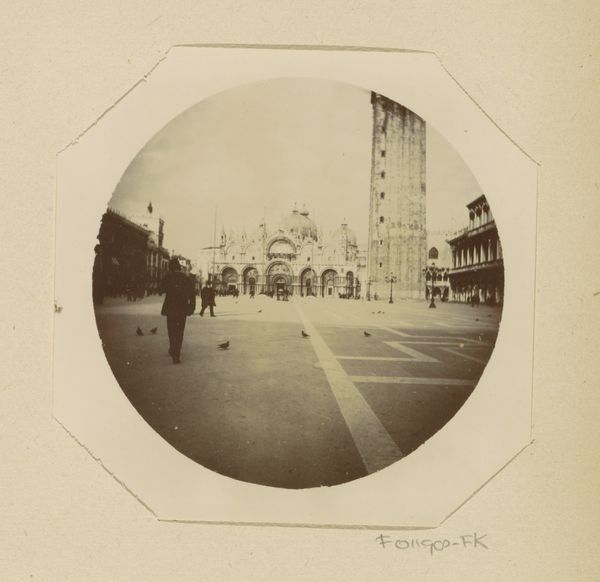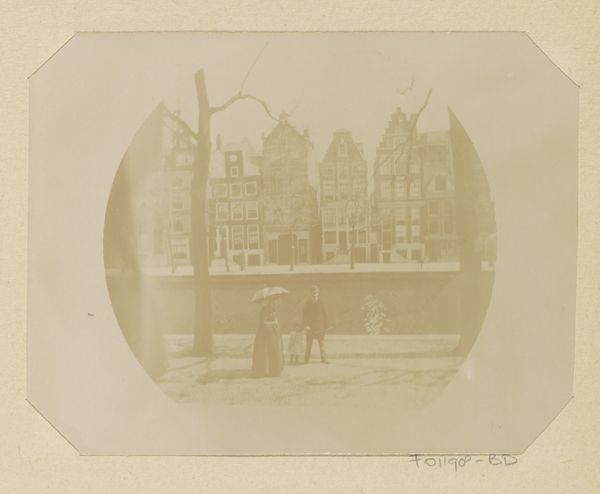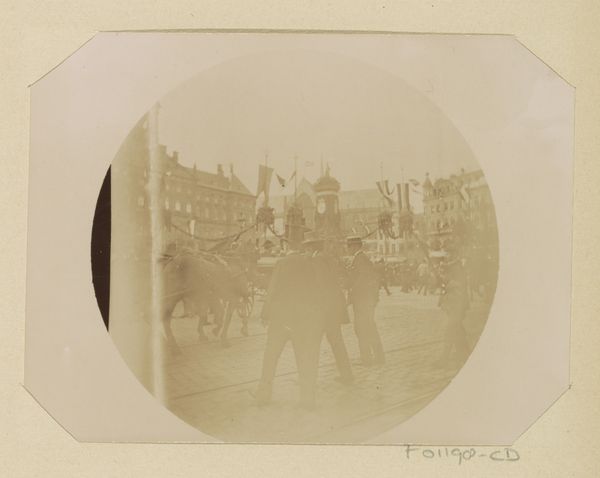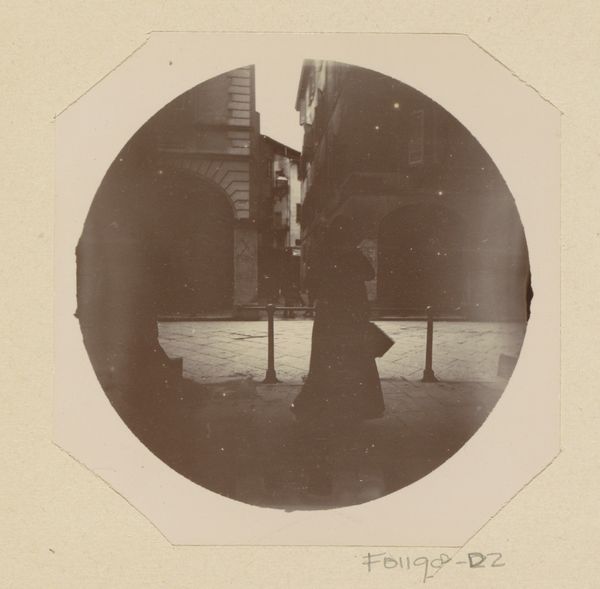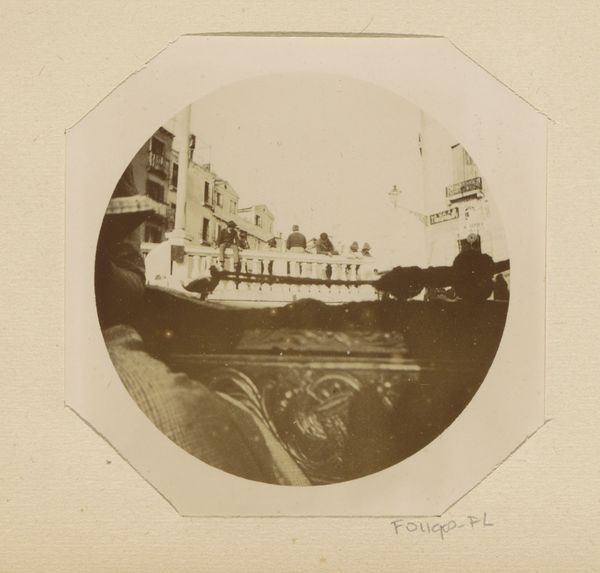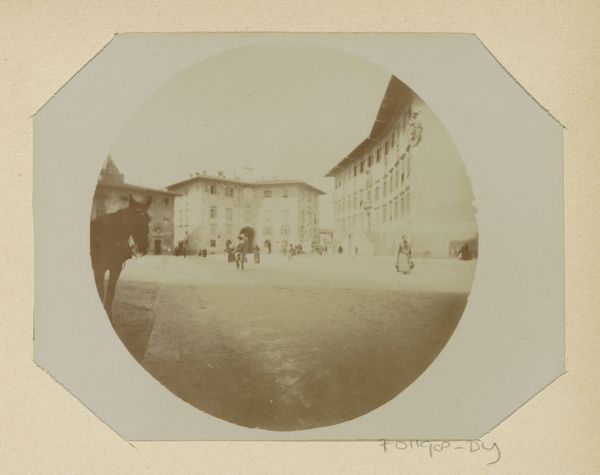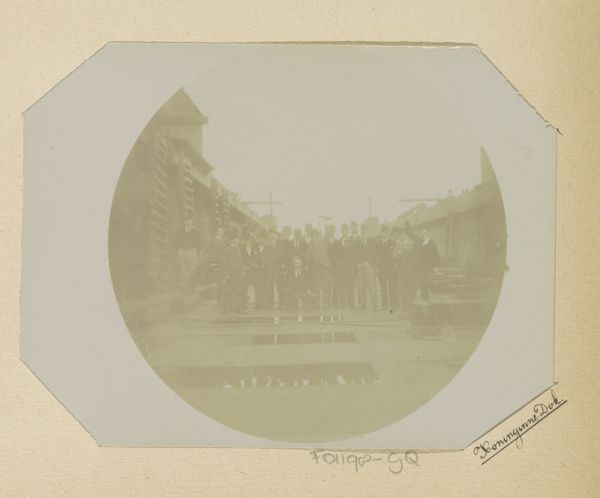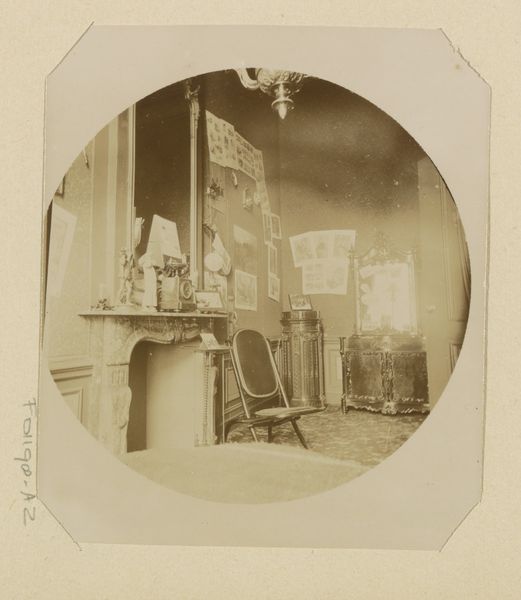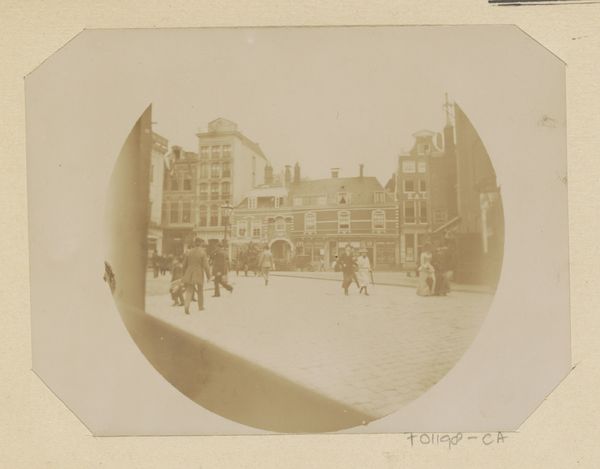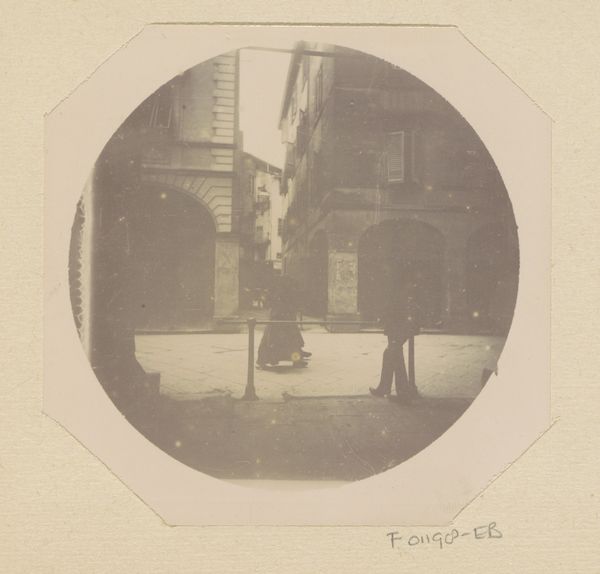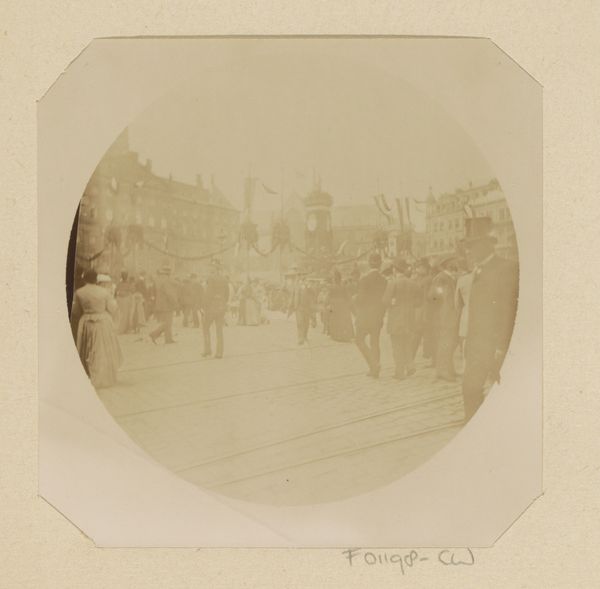
photography
#
pictorialism
#
landscape
#
photography
#
cityscape
#
realism
Dimensions: height 99 mm, width 98 mm
Copyright: Rijks Museum: Open Domain
Curator: It's fascinating how photographs can encapsulate entire eras, isn't it? Today we’re looking at "Shots in Amsterdam, Warnemünde, and Warnsborn", taken between 1889 and 1893 by Johanna Margaretha Piek. Editor: There's a lovely sepia quality, immediately imparting a sense of stillness and calm despite being, ostensibly, a cityscape. The rounded edges, combined with the grainy texture of the paper, emphasize the photographic processes from the time. Curator: Piek operated within a nexus of artistic and societal transitions. Photography's institutional acceptance was growing, mirroring industrial and social changes across Europe. Consider the democratizing effect of photography as it made representation more accessible, albeit still filtered through a specific lens of class and social standing. Editor: Yes, I see your point, however what stands out for me, material-wise, is the quality of light, that’s what I’d look for, almost as though Piek was consciously playing with light to simulate brushstrokes—giving photography painterly, artistic status and perhaps defying the mechanical implications of the photographic apparatus. This challenges a clear distinction between artisanal and industrialized modes of image-making. Curator: Precisely. This aligns with Pictorialism—the then avant-garde photographic movement. She sought artistic credibility by using techniques, often through printing processes, to soften detail and evoke an atmospheric mood similar to Impressionist paintings. Piek showed these at exhibits meant for upper and middle class consumption—art photography was then both art and commodity, existing to signify taste. Editor: In relation to that, look at the depiction of the workers on the barge here— rendered indistinct and blurry, merely an indicator of the transport industry that sustained Amsterdam, reduced to carrying materials and working behind the scene while the strolling gentleman, very neatly composed and in-focus is rendered a key figure, not too different from the industrialist patrons purchasing artworks at that time. The material realities reflected are pretty evident. Curator: Absolutely, the framing prioritizes bourgeois observation. This reveals the socio-economic dynamics implicit even in seemingly "objective" art forms like photography. Thank you for adding that angle, what do you make of the legacy of this piece, ultimately? Editor: Piek has drawn us back into the texture and making of the image itself, reminding us to attend to the materials used, but the fact we still look, decades later, suggests some lingering value, although it is tied to both artistry and labor from its time.
Comments
rijksmuseum about 2 years ago
⋮
The photograph of Herengracht was the key for identifying the album as belonging to the Pieks. It was taken from the house at number 258, where the family lived. We see the couple and their son with his classmates on an excursion to the Oostzee. The street photograph is an impression of German kaiser Wilhelm II’s visit to Amsterdam. The round, 9 centimetre photographs were taken with the improved Kodak No. 2.
Join the conversation
Join millions of artists and users on Artera today and experience the ultimate creative platform.
